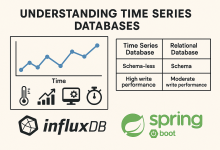Exploring Jiyu: A Niche Programming Language with a Unique Vision
The world of programming languages is vast, with new entries emerging regularly. Among these, Jiyu, a programming language created by Josh Huelsman and introduced in 2019, stands out for its distinct purpose and niche community-driven development. The language, hosted on the Handmade Network platform, offers insights into the evolving priorities of developers and the growing interest in building tools that prioritize fun and personal satisfaction over mainstream adoption.
Origins and Background
Jiyu was born out of a passion for creating a programming language that serves as both a technical and creative outlet. Unlike many languages aimed at solving large-scale industry challenges or achieving mass adoption, Jiyu embraces its identity as a project “for fun.” This perspective reflects the ethos of the Handmade Network, a platform dedicated to fostering projects that emphasize craftsmanship, low-level optimization, and creative independence.
Key milestones in Jiyu’s development include:
- First Appearance (2019): Jiyu’s initial commit on GitHub marked the beginning of its journey as an open-source project.
- Community Engagement: Discussions and progress updates are actively shared on the Handmade Network forums, showcasing the collaborative and transparent approach of its creator.
Features and Design Philosophy
Jiyu’s primary appeal lies in its simplicity and its alignment with the handmade philosophy, which prioritizes:
- Developer Enjoyment: Unlike mainstream languages designed with extensive enterprise support, Jiyu focuses on being enjoyable to use. This approach fosters creativity and experimentation among its users.
- Customization: While many aspects of Jiyu remain undocumented or in development, the language is structured to allow users to shape its behavior according to their needs.
- Community-Centric Development: Jiyu benefits from the Handmade Network’s vibrant community, which provides feedback, support, and suggestions.
The lack of emphasis on exhaustive features or rigid specifications positions Jiyu as a language for developers who value freedom and experimentation.
Technical Overview
Although detailed documentation on Jiyu’s syntax and functionality is sparse, insights can be gleaned from its GitHub repository and discussions within its community:
- Compilation: Jiyu features a custom compiler, a hallmark of its handcrafted approach. The compiler is both a technical experiment and a tool to deepen understanding of language design.
- Source Code Management: The project’s open-source nature invites collaboration and learning, with contributions and issue tracking visible on its GitHub repository.
- Line Comments: While specific tokens for line comments remain undocumented, the language’s development is dynamic, with room for expansion and refinement.
Table 1 summarizes Jiyu’s foundational attributes as recorded in its metadata:
| Attribute | Value |
|---|---|
| Creator | Josh Huelsman |
| Year of Introduction | 2019 |
| Community Platform | Handmade Network |
| GitHub Repository | Jiyu on GitHub |
| Purpose | Fun and creative exploration |
| Openness | Open-source |
| Development Focus | Compiler experimentation |
Community and Ecosystem
The Handmade Network serves as Jiyu’s central hub, fostering discussions around its development. The community’s ethos resonates with the idea of crafting tools and software that emphasize low-level control and deep understanding. This environment provides an ideal platform for niche projects like Jiyu to thrive.
While Jiyu’s central package repository count and file type specifications remain undefined, this lack of rigidity contributes to its experimental nature. Developers engaging with Jiyu often bring their perspectives, enriching its evolution.
Challenges and Limitations
Jiyu’s niche focus, while a strength, also presents challenges:
- Limited Documentation: The absence of detailed language specifications can make it less accessible to newcomers.
- Small User Base: As a project focused on fun rather than widespread adoption, Jiyu naturally attracts a smaller, more specialized audience.
- Undefined Features: Many standard programming language attributes, such as semantic indentation or line comments, are either not yet implemented or remain unspecified.
Future Prospects
The future of Jiyu depends largely on its community and the vision of its creator. Potential areas for growth include:
- Enhanced Documentation: Providing comprehensive guides and examples could attract a broader audience.
- Feature Expansion: Adding support for widely-used programming constructs could increase its appeal while maintaining its niche focus.
- Community Contributions: Encouraging more open-source contributions could accelerate development and introduce diverse perspectives.
Conclusion
Jiyu exemplifies the diversity of programming languages and the creative potential of niche projects. Its existence on the Handmade Network reflects a broader trend toward community-driven, passion-based software development. While it may never achieve the popularity of mainstream languages, Jiyu holds a unique place in the programming world as a language that celebrates freedom, creativity, and the joy of coding.
For those interested in exploring Jiyu, the Handmade Network forums and the GitHub repository offer resources and insights into this fascinating project.

